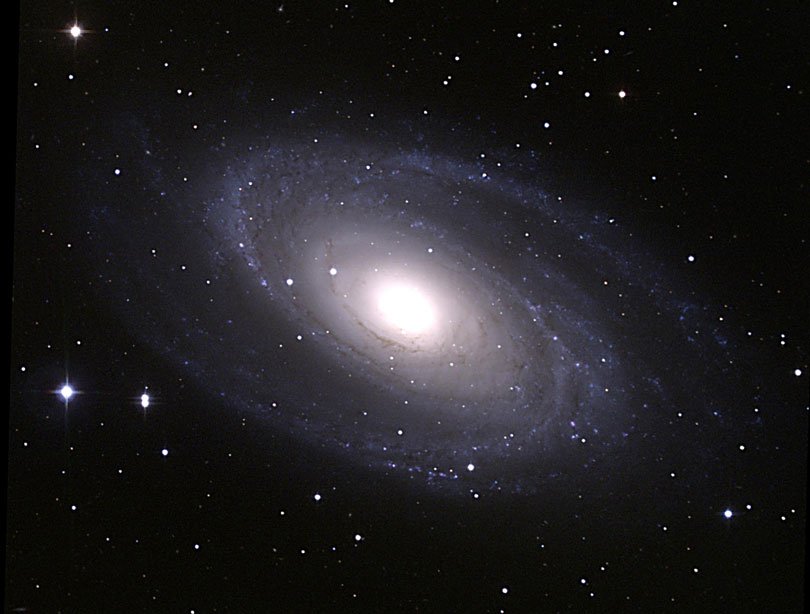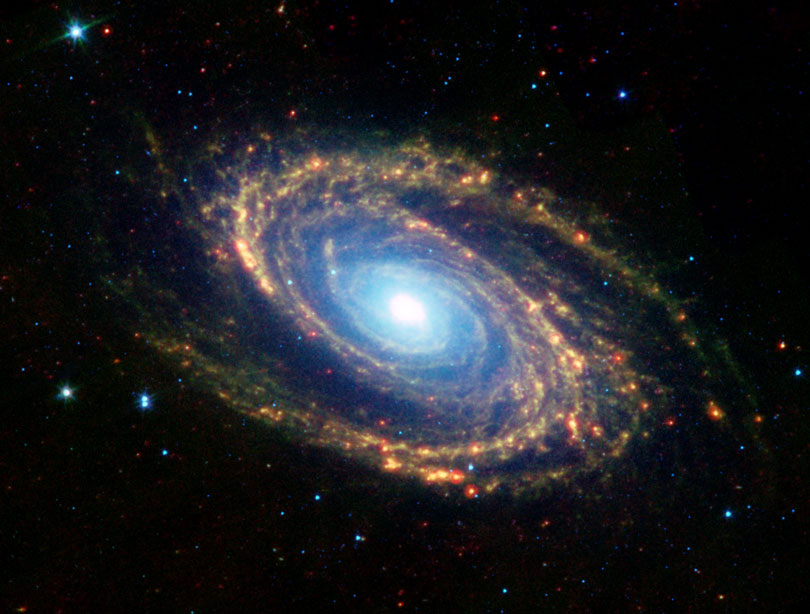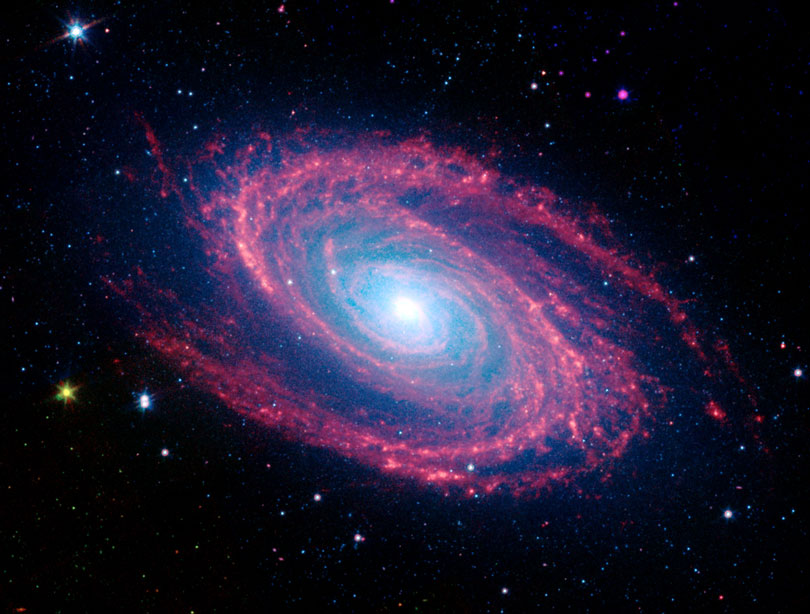- GALAXIES
- INFRARED WORLD
- INTERACTING GALAXIES
- MILKY WAY
- STAR BIRTH
- STAR DEATH
- GALAXIES
- INFRARED WORLD
- INTERACTING GALAXIES
- MILKY WAY
- STAR BIRTH
- STAR DEATH
Galaxies
M81



Visible:
Default View
Far Infrared:
LESS
MORE
Near Infrared:
LESS
MORE
M81
Messier 81 (M81) is a classic example of a spiral galaxy. Star-forming regions in this galaxy become evident in the infrared view. In the infrared, the spiral arm structure becomes much more powerful relative to the visibly bright galactic center, revealing denser concentrations of cold dust and gas ready to be transformed into new stars.
Visible:
Stars are partly obscured by dust.
Far Infrared:
Shifting to infrared light reveals the dust lanes in red.
Near Infrared:
Longer infrared wavelengths now show star-forming areas in red.
CREDITS:
Visible: N.A. Sharp (NOAO/AURA/NSF). Near-infrared: NASA/JPL-Caltech/S. Willner (Harvard-Smithsonian Center for Astrophysics). Far-infrared: NASA/JPL-Caltech/K. Gordon (University of Arizona) & S. Willner (Harvard-Smithsonian Center for Astrophysics).